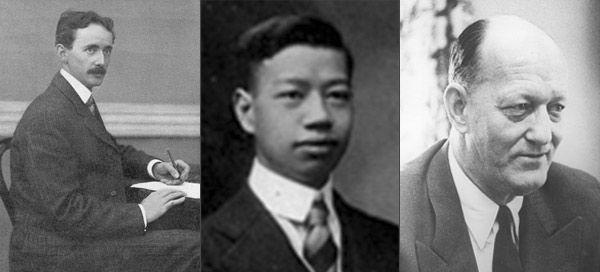Although their inventions have been surpassed by new technologies and processes, these Lehigh engineers came up with innovations in manufacturing that improved industry and society:
An early 20th-century inventor, entrepreneur, and holder of more than 100 patents, Daniel McFarlan Moore developed the Moore Lamp, the first commercially viable light source based on gas discharge instead of incandescence and the predecessor to contemporary neon and fluorescent lighting. Later in his career, he developed a miniature “glow lamp” that is still used by electronic and appliance displays, as well as vacuum tubes for early television. His early career with United Edison Manufacturing Company ended abruptly when the famed inventor asked the upstart engineer, “What’s wrong with my lamp?” and Moore responded, “It’s too small, too hot and too red.”
Tsai Shengbai, a pioneering Chinese industrialist, was one of Lehigh’s earliest and most successful international students. In 1914, the Chinese government sent him to the U.S. to receive an education in mining engineering—an education he used to lead the development of the country’s modern silk industry during the country’s 1930s-era industrial expansion. Under Tsai’s helm, Mayar Silk Mills, a premier Shanghai silk manufacturer, built a strong technological, marketing and management foundation to achieve a dominant position, and Tsai became an icon in early Chinese industrial circles.
In 1975, Monroe "Jack" Rathbone was one of 19 men from two centuries of American life chosen by the editors of Fortune magazine for permanent membership in the Hall of Fame of Business Leadership. An exceptional organizational leader by any measure, Rathbone was also hailed for his technical prowess in the development of the fluid catalytic crackingprocess, which dramatically increased the efficiency of oil refining and manufacturing.


